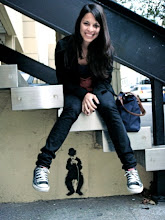
Steven Soderbergh uses sound effects and editing techniques in an extremely unconventional matter in The Limey to break temporal and spatial conventions. They represent the cement of the bridges that enable crossing from the present to the past and future, through flashbacks and flash-forwards. In addition, these techniques allow Soderbergh to reveal or blur elements of the story line and traits of the characters as he sees more pertinent. For example, throughout the first meeting between Wilson and Elaine, the scene is interrupted by pieces of fantasy and inner thoughts, transforming an initially formal and cold encounter into a much more intimate and personal interaction. Thus, by synchronizing the editing with the alternative use of diegetic and non-diegetic sound, Soderbergh is able to build successful temporal and special bridges.
Even though the film is unquestionably interesting in terms of experimentation, it has significant flaws. The exaggerated acting style of Terence Stamp occasionally distracts and draws the audience out of the story. For instance, when Wilson is talking with the head DEA agent, his over the top acting style mixed with the strong English accent and the jumpy and disorienting editing, leave the viewer as puzzled as the DEA agent, who’s only words are to sympathize with the audience: “the thing I do not understand is every mother fucker word you’re saying.”
In order to avoid this kind of flaws while experimenting at the highest with sound editing, it was necessary to create a plot that, even if somewhat thrilling, is simplistic and dry. It is not an especially mind-stimulating story in which the audience becomes active in trying to solve the mysteries posed throughout the film. However, if Soderbergh had sought that, The Limey would have turned out to be a complete fiasco. The viewers’ minds are sufficiently tangled and occupied at trying to solve another kind of mystery: making some sense out of the editing and sound techniques.
There is an early scene that, even if quite subtle, stands out from the whole as foreseen the role of this film in the industry. The scene begins with a close up of the emblematic picture of Ché Guevara, the hero of multiple Latin American’s revolutions, with his chin held high, looking over the horizon into a different future. The camera pans up from Ché’s picture, which is printed on Eduardo’s shirt, as he agrees with Wilson to kill Valentine. The reference to Ché is important to notice because, as a man whose image screams ‘revolución,’ in this context it embodies the role taken by The Limey in the film industry. This film is an experimental and revolutionary work that tends to irritate and disorient viewers by breaking the cinematographic conventions that allow viewers to process and understand films in a comfortable and easy way. Soderbergh unveils the viewer’s eyes by revealing the medium that is behind the production. The audience cannot sit thought this film without thinking about the editing and sound techniques employed.

No comments:
Post a Comment